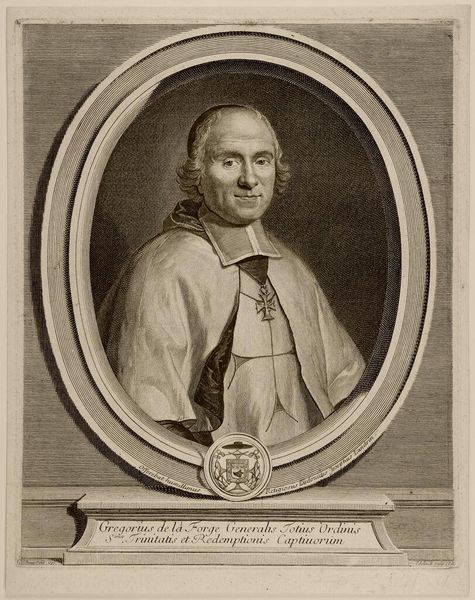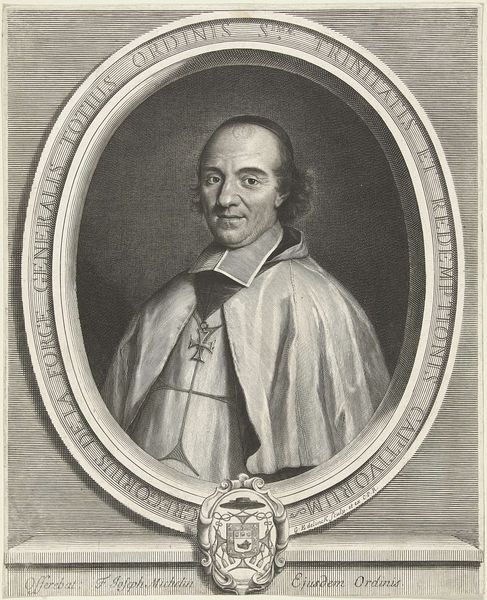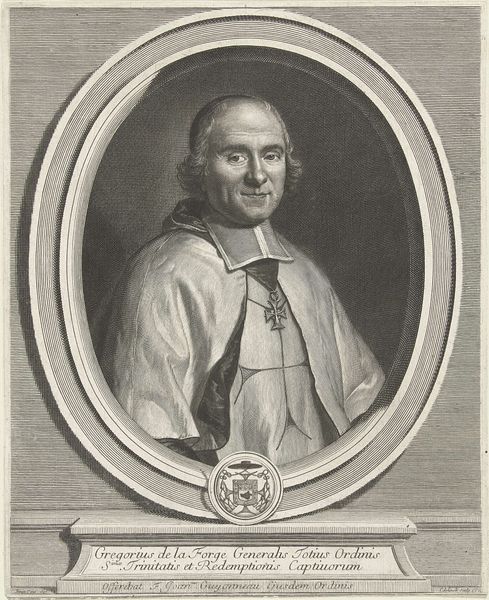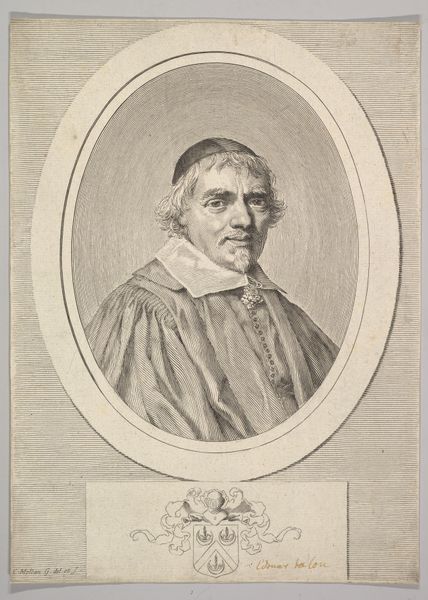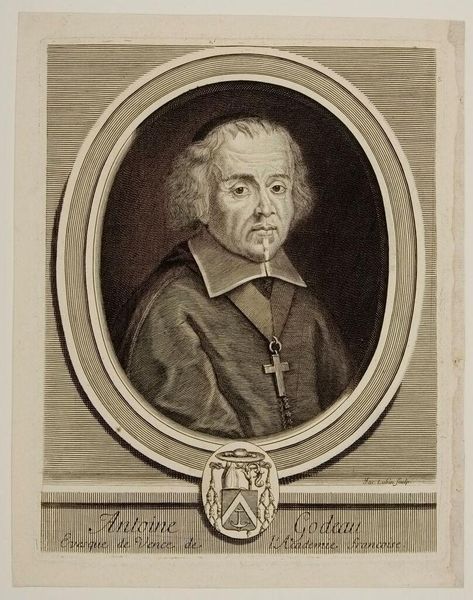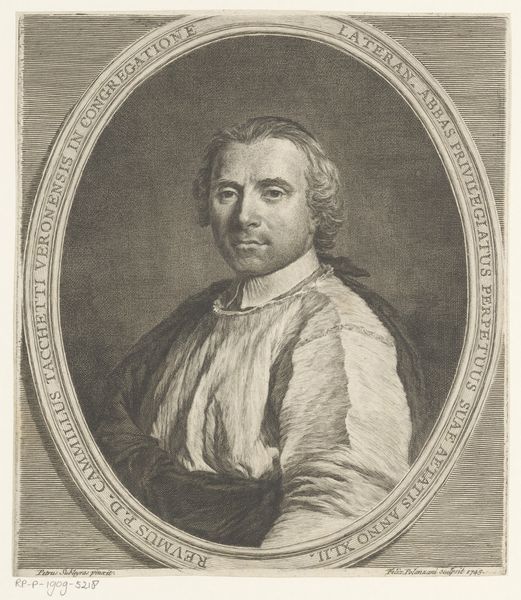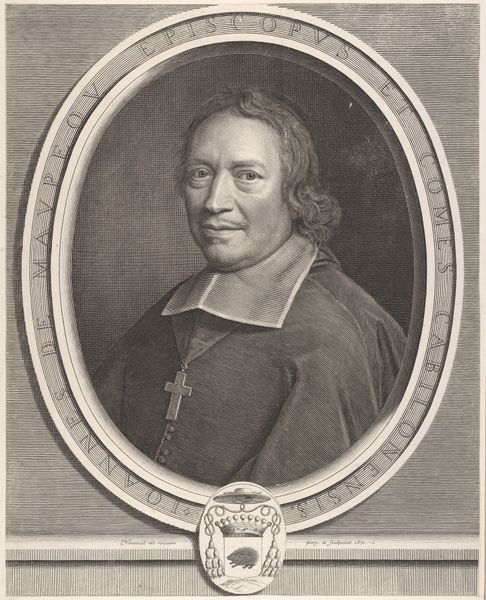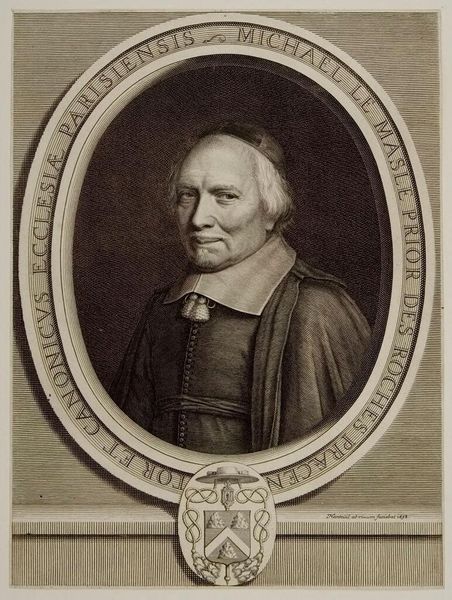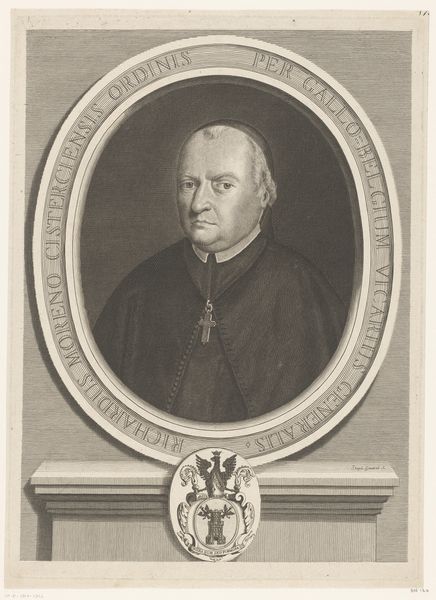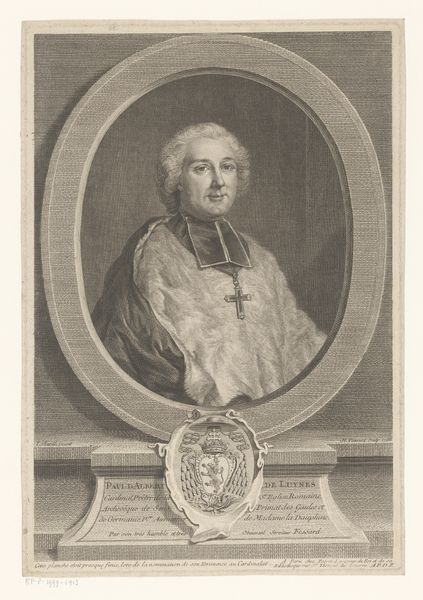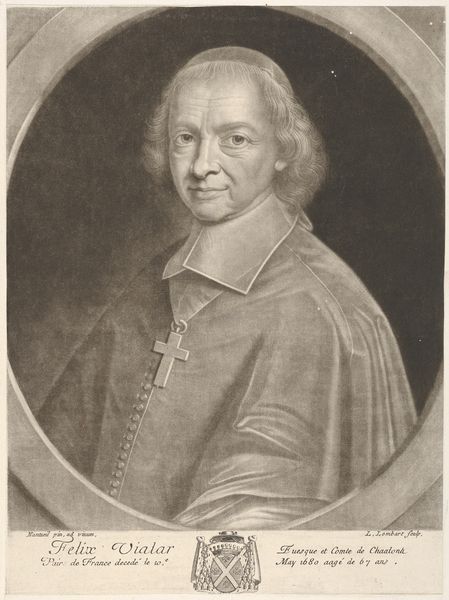
drawing, print, etching
#
portrait
#
drawing
#
baroque
# print
#
etching
Dimensions: sheet: 15 3/16 x 12 5/16 in. (38.5 x 31.3 cm)
Copyright: Public Domain
Robert Nanteuil’s engraving of Claude Joly was made in 1673, a period defined by the consolidation of royal power under Louis XIV and the dominance of the Catholic Church in France. This portrait captures Joly not just as an individual, but as a figure deeply embedded in the political and religious structures of his time. As canon of Notre-Dame, Joly occupied a powerful position within the church hierarchy. The engraving presents him with symbols of religious authority, framing him within the visual rhetoric of power and piety. His gaze, though, offers a glimpse beyond the vestments and titles; there’s an undeniable human quality in his expression. Nanteuil, as an artist, was similarly navigating a complex social landscape. As a leading portrait engraver, he was capturing the likenesses of the very individuals who shaped the era's political and religious policies. The act of portraying Joly becomes a negotiation of identity, power, and representation in a society where these elements were inextricably linked. This portrait invites us to contemplate the relationship between the individual and the institutions they inhabit.
Comments
No comments
Be the first to comment and join the conversation on the ultimate creative platform.
